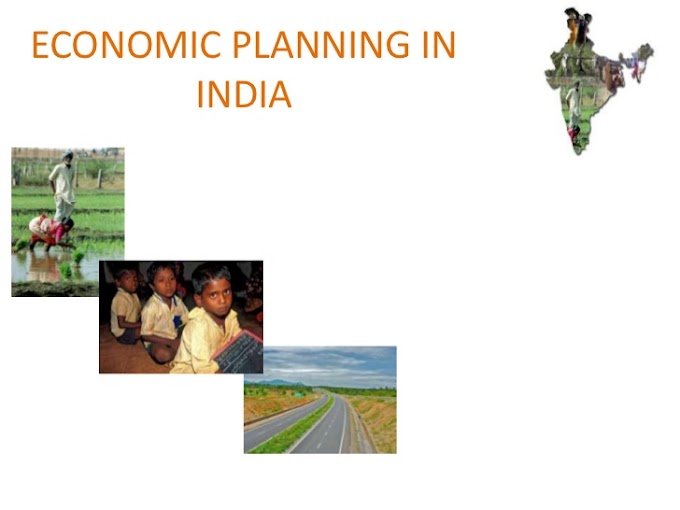Indian Constitutional Development
India Regulating Act 1773
- Subjected the Company’s actions to the supervision of the British Government
- End of Dual government.
- Governor of Bengal to be the Governor – General of British territories of India.
- Establishment of Supreme Court in Calcutta.
- The servants of the Company were forbidden to engage in private trade, accept presents or bribes, etc.
Pitts Act of 1784
- The commercial and political activities of the Company were now separated. Board of Control of six members (including two cabinet ministers) set – up to guide and supervise the affairs of the Company in India.
- Three members will be there in Governor – General’s Executive Council.
- Secret Committee of three Directors were to look into political and military affairs. [Governor General and the council were forbidden to declare war and make treaties without the sanction of secret committee].
- Madras and Bombay Presidencies were subordinated to the Governor – General – in – Council of Bengal in all matters.
- This act gave the British Government a measure of control over the Company’s affairs. In fact, the Company became a subordinate department of the State.
- Act of 1786 : Governor General given the power to over – ride the council and was made Commander – in – Chief also.
Charter Act - 1793
- Company given monopoly of trade for 20 more years.
- Expenses and salaries of the Board of Control to be charged on Indian revenue.
- The Governor General and the Governors could now over – ride the decisions of their respective Councils.
- All laws were to be translated in Indian languages.
- It laid the foundation of government, by written laws, interpreted by courts.
Charter Act - 1813
- Company deprived of its trade monopoly in India except in tea and trade with China. This made the Company more of an administrative body. All Englishmen could trade in India subject to few restrictions.
- A sum of 1 lakh earmarked annually for education of Indians.
- Further, Christian missionaries were also permitted to come to India and preach their religion.
Charter Act - 1833
- End of Company’s monopoly even in tea and trade with China. Company was asked to close its commercial business at the earliest.
- All restrictions on European immigration into India and acquisition of land and property in India by them were removed, legalizing European colonization of India.
- Governor General of Bengal to be Governor General of India; all powers, administrative and financial, were centralized in the hands of the Governor – General – in – Council. (1st Governor General of India – Lord William Bentinck).
- President of Board of Control became the minister for Indian affairs.
- A law member (without power to vote) was added to the Executive Council of the Governor General. Macaulay was the first Law member. This increased the Council’s strength to four, with it began the Indian Legislature.
- A law commission was constituted for codification of laws.
- The Act threw open to ail, irrespective of religion, place of birth, descent and colour, services under the Company.
Charter Act of 1853
- The Act renewed the powers of the Company and allowed it to retain the possession of Indian territories in trust for the British Crown but not for any specified period.
- The number of members of the Court of Directors was reduced from 24 to 18 of which 6 were to be nominated by the Crown.
- The Law member was made a full member of the Governor General’s Executive Council.
- Legislation was treated for the first time as separate from executive functions.
- Questions could be asked and the policy of the Executive Council could be discussed, though the Executive Council could veto a bill of the Legislative Council.
- Recruitment to Civil Services was based on open annual competition examination (excluding Indians).
Government of India Act 1858
- Rule of Company in India ended and that of the Crown began.
- System of Dual government ended. Court of Directors and Board of Control abolished and substituted them with a post of Secretary of State (a member of the British cabinet). He was assisted by a 15 – member council (called Indian Council). He was to exercise the powers of the Crown.
- Secretary of State governed India through the Governor General.
- Governor General received the title of Viceroy. He represented Secretary of State and was assisted by an Executive Council, which consisted of high officials of the Government.
- A unitary and highly centralized administrative structure was created.
The Indian Council Act 1861
- A fifth member, who was to be a jurist, was added to the Viceroy’s Executive Council.
- 6 – 12 additional members to be added to the Executive Council for legislation purpose. This implied that Viceroy’s Executive Council, which was so long composed of officials, would now include certain additional non – official members. Some of non – official seats were offered to natives of high ranks. Thus, a minute element of ‘popular’ participation was introduced in the legislative process. The additional members, though, had little powers.
- The Executive Council was now to be called Central Legislative Council.
- Viceroy could issue ordinances in case of emergency.
The Indian Council Act 1892
- Two improvements in both the Central and the Provincial Legislative Councils were suggested.
- Though the majority of the official members was retained, the non – official members were to be nominated by the Bengal Chamber of Commerce and Provincial Legislative Councils. [The non - official members of the Provincial Councils were to be nominated by certain local bodies such as universities, district boards, municipalities]. Indian leaders like G.K. Gokhale, Ashutosh Mukherjee, Ras Bihari Ghosh and S.N. Banerjee found their way in the Legislative Council.
- The Councils were to have the powers to discuss the annual statement of revenue and expenditure (i.e. the budget) and of addressing questions to the Executive). They could also put questions, within certain limits, to the Government on matters of public interest after giving six days notice.
Indian Council Act 1909
Morley – Minto Reforms
- Morley was the Secretary of State, while Minto was the Indian Viceroy.
- Legislative Councils, both at the Centre and in the Provinces, were expanded.
- With regard to Central Government, an Indian member was taken in the Executive Council of the Governor General.
- The size of the Provincial Legislative Councils were enlarged by including elected non – official members so that the official majority was gone. Their functions were also increased. Now, they could move resolutions on Budget and on some matters of public matters.
- An element of election was also introduced in the Central Legislative Council, but the official majority was maintained.
- The most notable and retrograde change introduced was that Muslims were given separate representation. Thus, communal representation was introduced.
Government of India Act 1919
Montague – Chelmsford Reforms
- Dyarchy system introduced in the provinces. It was considered to be a substantial step towards transfer of power to the Indians). The Provincial subjects of administration were to be divided into two categories : Transferred and Reserved.
- The Transferred subjects were to be administered by the Governor with the aid of ministers responsible to the Legislative Council. The Governor and the Executive Council were to administer the reserved subjects without any responsibility to the legislature.
- Devolution Rules : Subjects of administration were divided into two categories – Central and Provincial. Subjects of all India importance (like railways and finance) were brought under the category of Central, while matters relating to the administration of the provinces were classified as Provincial.
- The Provincial Legislature was to consist of one House only (Legislative Council).
- The number of Indians in the Governor General’s Executive Council was raised to three in a Council of eight. The Indian members were entrusted with departments such as Law, Education, Labour, Health and Industries.
- The Centre was now to have a Bicameral Legislature for the first time. It actually happened after 1935 Act.
- Communal representation extended to Sikhs, Christians, Anglo – Indians, etc. Secretary of State to be henceforth paid salary out of the British revenue.
Government of India Act 1935
- Provided for the establishment of All – India Federation consisting of the British provinces and the Princely States. The joining of Princely States was voluntary and as a result the federation did not come into existence.
- Dyarchy was introduced at the Centre (e.g., Department of Foreign Affairs and Defence were reserved for the Governor General).
- The other Federal subjects were to be administered by the Governor General with the assistance and advice of a Council of Ministers to be chosen by him (but to include representatives of Princely States and minorities, and to be responsible to the Central Legislature). Residuary powers were to be with the Governor General only.
- The Federal Legislature (Central Legislature) was to have two chambers (bicameral) – the Council of State and the Federal Assembly. The Council of State was to be a permanent body with one – third of its membership being vacated and renewed triennially. The Federal Assembly’s duration was fixed for five years.
- It made a 3 – fold division of powers: Federal (Central) Legisl1ative List Provincial Legislative List and the Concurrent Legislative List. Residuary legislative powers were subject to the discretion of the Governor General. Even if a bill was passed by the Federal Legislature, the Governor General could veto it, while even Acts assented to by the Governor General could be disallowed by the King – in – Council.
- Provincial autonomy replaced Dyarchy in Provinces i.e., the distinction between Reserved and Transferred subjects was abolished and full responsible government was established, subject to certain safeguards. They were granted separate legal identity.
- The Governor was the head of the Provincial Executive and was expected to be guided by the advice of the popular ministries. However, the Act gave arbitrary powers to the Governors to act in their ‘discretion’ in certain matters.
- The Act also provided for a Federal Court (which was established in 1937), with original and appellate powers) to interpret the Constitution. A Federal Bank (the Reserve Bank of India) was also established. The Indian Council of Secretary of State was abolished.
- Principle of separate electorate was extended to include Anglo – Indians, Indian Christians and Europeans.
- Burma (now Myanmar) and Aden were separated from India and two new provinces Orissa and Sind were created.





